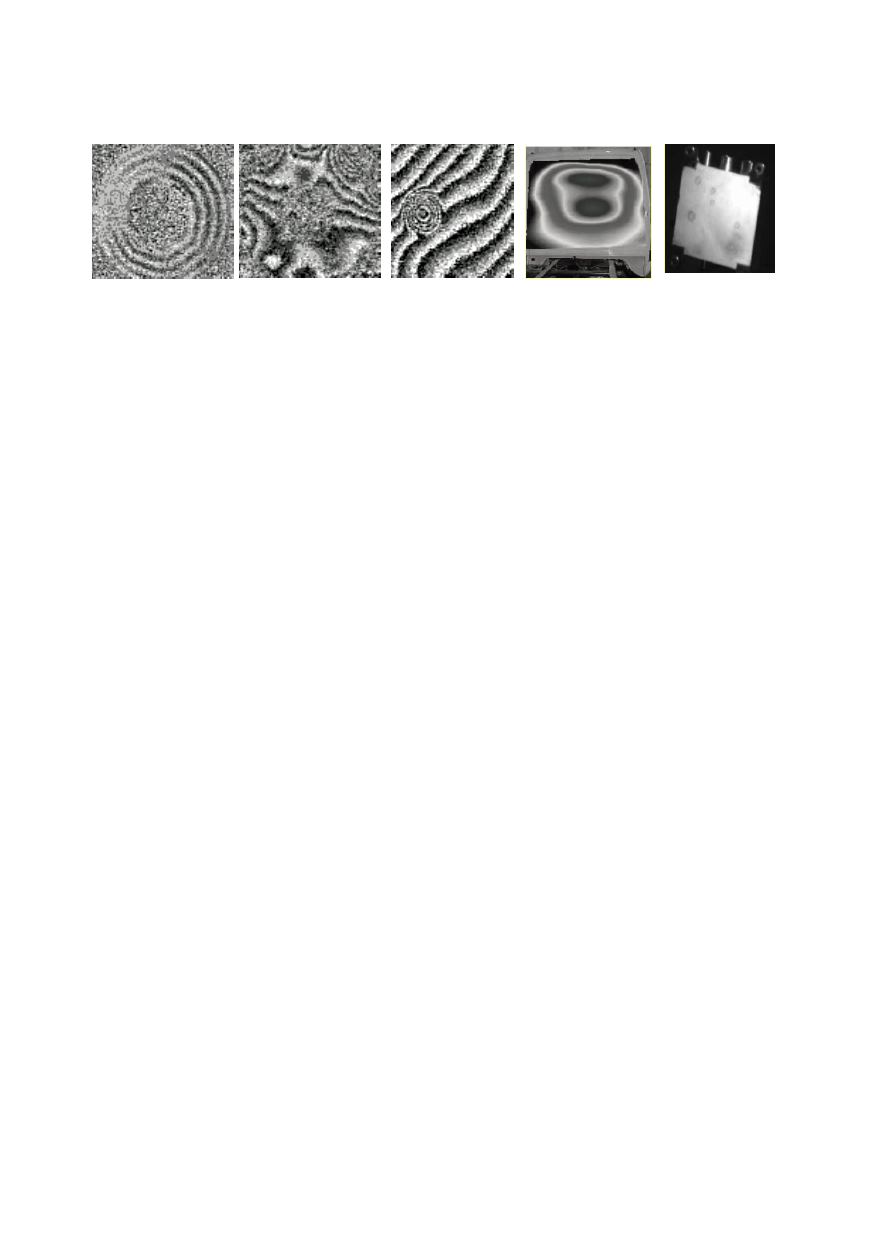

259
in repaired areas and stressed components can be recognized. To stress the component
various loading are applied (thermal loading, vacuum, heating and vibration excitation).
a. Loud speaker, Ø 30, CCD camera -
pulse separation 40 µs (left) and few s
b. Honeycomb/
skin debonding
c. Truck cabin
Vibration analysis
d. Artificial de-
fects in Al casing
Figure 21: The examples of ESPI laser interferometry application in industrial environment
Sensor head can be of small weight and had robotic production inspection system. For
inspections in daily circumstances Nd3+ :YAg is used as a source. The surface of 1 m
2
can be inspected and obtain data for deformation and /or stress distribution on the surface.
Technical details are: resolution 768x582 pixels, mount lens, zoom 1 4/6 -12mm.
DISCUSSION AND CONCLUSION
Presented NDT methods are modern in the world, although used for more then one
decade. Some of these methods, GPS and AE, enable global inspection and monitoring,
during building and maintenance of structures, and the others, improved UT and MT,
enable reliable testing of structural components. Recently developed laser metrology for
different purposes also contributes to better testing and inspection.
One point of view would be to make transformation to nowadays the most accurate
measurements according to defined theoretical evaluations; the other would be related to
development methods in particular industrial branches: railways, shipbuilding, masonry,
mechanical and electrical engineering, from heavy industry demands to micro or
nanotechnologies. The approach could be described as: techniques used in standard
methods of verification and the other still undeveloped methods but very prospective.
Productivity increase, consumer satisfaction and safety require that manufacturing
products or structures be thoroughly inspected and characterized during fabrication, after
fabrication and in service, along the lifespan. There is broad selection of procedures ser-
ving to assess: shape, thickness, composition, microstructure, surface and inner defects,
which may affect structural integrity (delaminations, cracks, porosity, disbonds). Due to
increased number of investigated items and constructions, ageing effects and new
materials and manufacturing processes, innovative inspection concepts strongly needed to
reduce the human factor and to increase throughput and sensitivity. Practical examples
are sophisticated sensors, adapted loaded mechanisms, data evaluation and presentation.
The last drawsbacks of conventional holographic methods have been suppressed with
the substitutions of photographic plates and thermo graphic cameras by CCD cameras.
Some results show that current limitations are the capability of laser and CCD cameras,
demanding further research and development.
REFERENCES
1.
http://www.google.com/url?sa=t&source=web&ct=res&cd=4&url=http%3A%2F%2Fen.wikip edia.org%2Fwiki%2FGlobal_Positioning_System&ei=NV5FSf7JEZWgQeKe4NII&usg=AFQ
jCNGrf5XrBYp--JY37hZQqJE1_JlGEA&sig2=eoJvrrFw67vkYP-4Tc9Eew


















